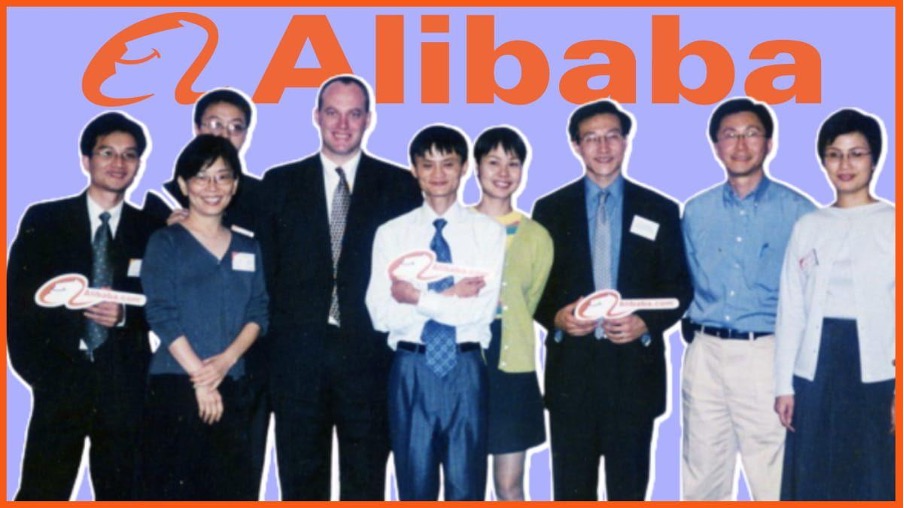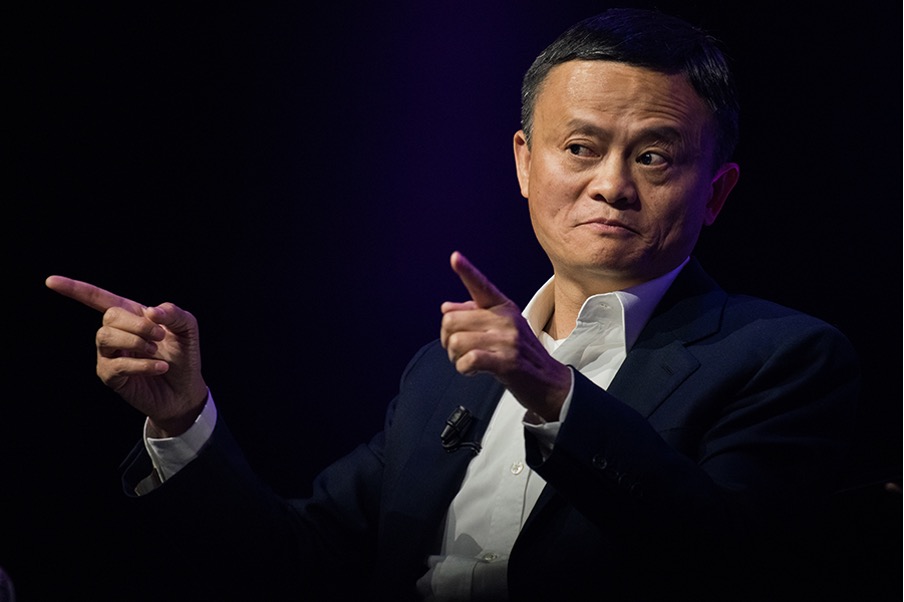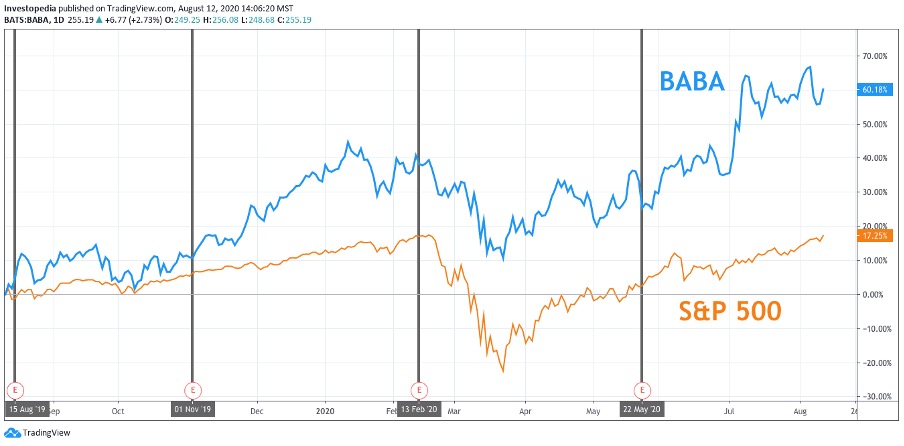Upon his return to China in late March, Jack Ma, the co-founder of Alibaba, made a deliberate choice to maintain a low profile following over a year of absence. His presence in the country was discreetly announced through a brief article published by a school on the Alibaba campus in Hangzhou on March 27. The article depicted Ma dressed casually in a white sweatshirt, cap, and tracksuit trousers, where he said a few appreciation words about the children’s work.
Despite keeping a low profile for three years, with nearly a year spent abroad, Ma’s return carried symbolic weight. Amid a crackdown on tech giants and stringent zero-COVID-19 policies spanning three years, which severely impacted various sectors of the economy, Chinese business leaders interpreted Ma’s return as a hopeful sign. It was viewed as a message from Beijing, signaling that China remains open for business.
Just three days after Ma visited the Alibaba school, the company made a significant announcement. As China’s leading online retailer, with a pervasive presence across multiple sectors of the digital economy and serving over 900 million Chinese annually, Alibaba unveiled plans to divide its operations into six independent subsidiaries. These include a primary branch for online retail, as well as separate divisions for cloud services, logistics, entertainment, international ventures, and other local services such as meal delivery and mapping.

How Alibaba became a startup success story
Alibaba Group, established in 1999 by Jack Ma, is a Chinese multinational conglomerate specializing in e-commerce, retail, technology, and internet services. The company engages in diverse business segments, operating online marketplaces like Taobao and Tmall for wholesale and retail transactions. Additionally, Alibaba provides online and mobile payment solutions, shopping search engines, and cloud computing services. Beyond e-commerce, it is involved in the manufacturing of electronic components and actively invests in research and development, particularly in areas such as artificial intelligence. Regarded as one of the world’s largest e-commerce entities, Alibaba is frequently likened to Amazon and recognized for its significant role in venture capital and investment activities globally.
The Beginning:
Jack Ma, alongside 17 co-founders, initiated the formation of Alibaba in 1999, launching an online wholesale marketplace. Over time, this Chinese company evolved into one of the world’s most valuable corporations. Alibaba’s rise was particularly notable in the early 21st century when it expanded and invested significantly. Operating in a sector with minimal competition in India during its inception, Alibaba thrived, taking advantage of stringent Internet regulations. The narrative suggests Alibaba’s journey from a modest apartment to becoming a prominent global e-commerce giant.
Business Model:
The corporation serves as an intermediary, connecting online buyers and sellers and facilitating the transaction of goods. A significant share of its sellers consists of small-scale merchants, while the platform accommodates a wide array of major renowned brands. Customer satisfaction poses a considerable challenge for the company, particularly with the sellers encountering difficulties in fulfilling orders. The company imposes fees on merchants to elevate their listings in search rankings. Although it has established dominance in the Chinese e-commerce market, it notably lacks a physical retail presence.
Revenue:
Alibaba generates its income primarily from retail e-commerce and related marketplace services within China. In 2022, the company recorded a revenue of $134.567 billion, marking a 22.91% rise compared to the previous year. Its revenue model involves collecting commissions based on the percentage of the transaction value of goods sold. Approximately 12% of the total revenue is anticipated from China Wholesale and Other Revenues. The robust consumption patterns in China propel the revenue from wholesale commerce and logistics services.
What went wrong?
Capri highlighted the mounting clampdown within China as a significant concern for Alibaba and its counterparts.
President Xi Jinping has urged officials to tighten control over the country’s tech giants. Last month, he emphasized the importance of strengthening efforts to combat monopolistic practices among online platforms, as reported by the state news agency Xinhua.
The antitrust probe into Alibaba and investigations into other companies have underscored the gravity of this objective. Recently, another Chinese e-commerce entity, VIP Shop, acknowledged that it was under investigation for “alleged unfair competition practices.” Meanwhile, Pinduoduo (PDD), a competitor of Alibaba in e-commerce, has faced public scrutiny over its corporate culture, indicating the government’s readiness to foster broader criticism of the industry.
Beyond these investigations, Beijing’s ambitions to exert force over private tech firms extend further. Although the crackdown has gained momentum in the past weeks, the groundwork has been laid for some time. Capri noted instances where tech firms were compelled to collaborate with state-owned enterprises, such as Ant Group’s Alipay partnering with the state-owned UnionPay in 2018 to develop new technology.
Capri suggested that this trend would accelerate in the coming weeks and months. Control over data and digital platforms is pivotal, and consequently, measures like breaking up Alibaba or transforming it into a quasi-state-owned entity could be on the horizon.
While Alibaba primarily operates in China, any significant changes to its operations could reverberate globally. The company, which has been listed on Wall Street since 2014 and held the record for the world’s largest IPO, counts Japan’s SoftBank (SFTBF) as a major shareholder. Additionally, prominent global investment firms like Vanguard, T. Rowe Price, and BlackRock have all invested in Alibaba.

Jack Ma, the visionary behind China’s e-commerce pioneer Alibaba since its inception in 1999, issued a stark wake-up call that underscores the current challenges facing the company.
In a late internal blog post last year, Ma expressed his belief in Alibaba’s capacity for change and reform, rallying the company’s workforce to realign with its mission and vision. However, this rallying cry only served to highlight the perceived loss of direction within China’s most renowned tech conglomerate. Once the leading force in Asia’s corporate landscape, Alibaba faced a significant setback in November when its market capitalization was surpassed for the first time by its Chinese competitor PDD Holdings. With its shares plummeting by 75% from their peak three years ago, Alibaba found itself embroiled in a series of regulatory disputes, strategic reversals, and declining employee morale.
The ascendancy of PDD over Alibaba acted as a poignant wake-up call for the latter, triggering introspection within the company’s leadership. New CEO Eddie Yongming Wu, seeking to fortify Alibaba’s position, assumed direct oversight of the core e-commerce division by replacing longtime executive Trudy Dai. Yet, insiders and analysts argue that Alibaba has struggled to effectively counter aggressive new rivals, adapt to advancements in artificial intelligence, and leverage its strengths in domestic e-commerce to penetrate Western markets.
Despite initial investor optimism following the announcement of a restructuring plan aimed at unlocking shareholder value and stimulating growth, Alibaba faced mounting challenges. Fading enthusiasm, exacerbated by uncertainties surrounding China’s post-pandemic economic trajectory, led to the abandonment of key components of the restructuring initiative. Plans to spin off the cloud business and list the supermarket unit were shelved, while the fate of other units remains uncertain. Internal discord further complicated matters, with instances of resistance to change and power struggles hampering organizational cohesion.
Additionally, tensions surfaced regarding the financial arrangements between Alibaba’s e-commerce platforms and its cloud business in the event of a split, further muddling the company’s strategic outlook. Amidst these complexities, Alibaba’s cloud division, positioned as a growth driver amidst the “AI era,” faces headwinds including lackluster demand and increased competition.

Meanwhile, the impending IPO of Alibaba’s logistics arm, Cainiao, reflects the company’s strategic response to shifting market dynamics. However, uncertainties loom over the future of fintech affiliate Ant, as regulatory hurdles impede its path to a potential IPO.
In the face of mounting challenges and intensifying competition from rivals like ByteDance-owned Douyin and PDD, Alibaba must embark on a radical revitalization effort. To regain its former glory, the company must prioritize innovation, refocus on its core strengths, and foster a renewed sense of unity and purpose across the organization.
Reasons Behind the Turmoil
How has COVID-19 been impactful:
The pandemic-induced shift in consumer behavior has added another layer of complexity to Alibaba’s woes. While certain segments like food delivery experienced surging demand, others, such as clothing and electronics, witnessed a downturn. This fluctuation has impacted Alibaba’s core commerce revenue and local services, potentially leading to sales contractions and logistical disruptions. Coupled with antitrust scrutiny and regulatory headwinds, these factors have cast uncertainty over Alibaba’s future trajectory.
Competition:
Alibaba’s dominance in the market has declined from 75% in 2015 to 50% presently, largely attributed to the increasing competition posed by online retailers such as JD.com and Pinduoduo, as well as the social networking platform WeChat.
Regulatory oversight:
Alibaba confronts obstacles stemming from antitrust probes and regulatory scrutiny, notably highlighted by a hefty $2.8 billion fine imposed in 2021.
Geopolitical strains:
The friction between the US and China has impacted Alibaba’s operations, casting a shadow over its prospects. In recent years, escalating tensions between the two nations have presented fresh hurdles, particularly in the economic and defense spheres. While China remains a significant trade partner for the US, its concurrent development of military capabilities poses challenges to US strategic interests.
Other Factors:
Various factors have contributed to Alibaba’s crisis. Regulatory pressures, exemplified by the hefty antitrust fine and ongoing investigations by Chinese authorities, have played a pivotal role. Moreover, the company has grappled with fierce competition and struggled to innovate in artificial intelligence, raising doubts about its competitive edge. Tensions with the Chinese government, stemming from disputes over data privacy and Jack Ma’s critiques of financial regulation, have further exacerbated the situation. These challenges, compounded by evolving market dynamics, have eroded Alibaba’s once lofty position in the industry.
Written by – Aarushi Dadhich
Edited by – Archi Agarwal
